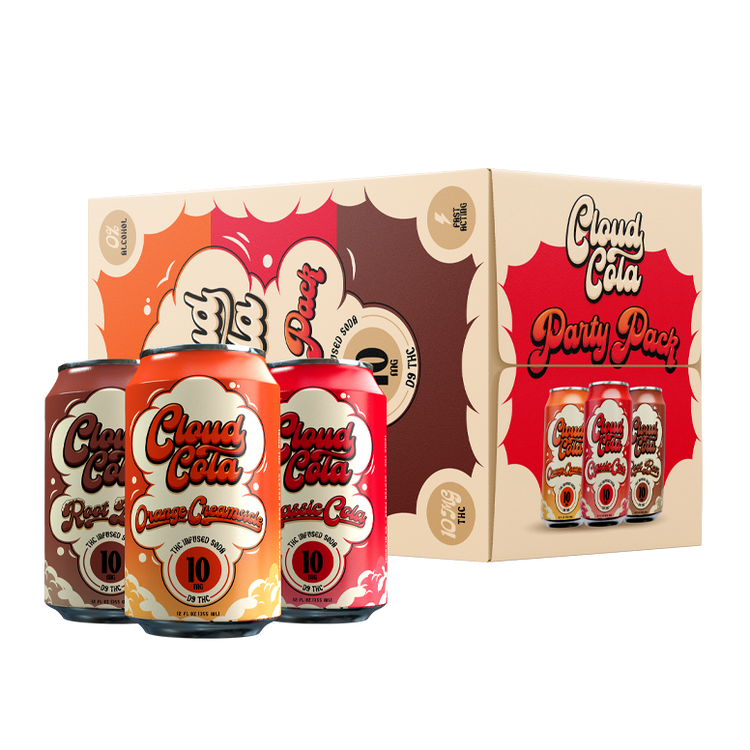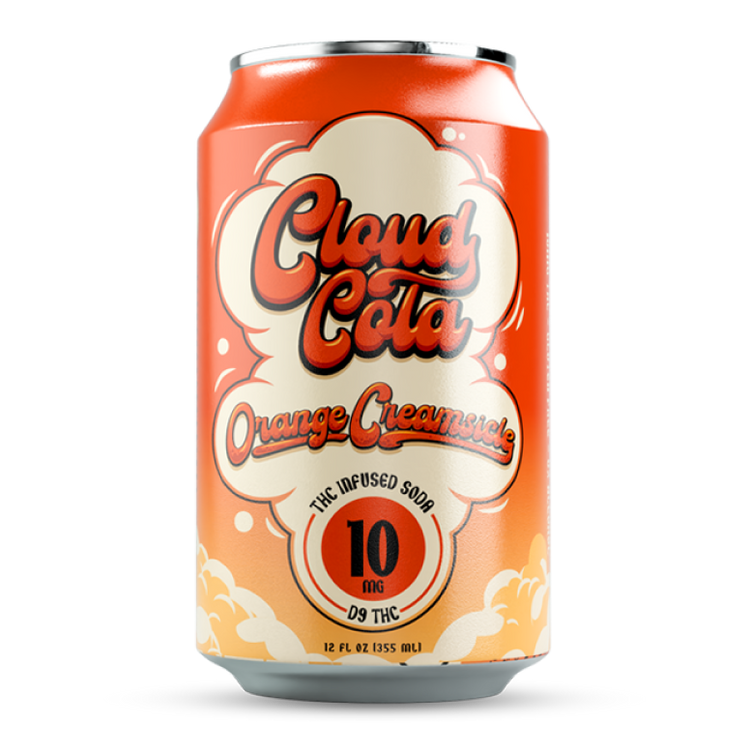The Extraction Process
Before diving into the science behind THC soda, it’s important to understand how the main active ingredient, tetrahydrocannabinol (THC), is extracted from the cannabis plant. This process, known as extraction, involves isolating THC from other plant compounds, resulting in a concentrated form that can be safely incorporated into beverages.
Source Material
There are several methods used to extract THC from the cannabis plant, each with its own advantages and disadvantages. One common method is solvent extraction, which uses solvents like butane or ethanol to dissolve THC and other cannabinoids. The solution is then filtered and evaporated, leaving behind a concentrated THC extract. Another method is CO2 extraction, which utilizes pressurized carbon dioxide to extract THC. This method is considered safer and produces a higher quality extract due to the absence of residual solvents.
Extraction Methods
Other extraction methods include hydrocarbon extraction, which uses propane or butane under pressure, and water extraction, which employs heat and pressure to isolate THC. The choice of extraction method depends on factors such as desired purity, yield, and safety considerations. Once extracted, THC is typically further refined and processed before being added to beverages.
CO2 Extraction
CO2 extraction stands out as a preferred method due to its efficiency and safety.

- The process begins by subjecting dry cannabis material to high pressure CO2, which liquefies the gas.
- This pressurized CO2 acts as a solvent, effectively dissolving THC and other cannabinoids from the plant matter.
- As the pressurized CO2 is then gradually reduced, it returns to its gaseous state, causing the THC to precipitate out, leaving behind a highly concentrated extract.
- The beauty of this method lies in its ability to isolate specific cannabinoids while minimizing the presence of unwanted plant compounds, resulting in a clean and pure extract.
Ethanol Extraction

Ethanol extraction is another widely used method for THC isolation. This process involves using ethanol, a polar solvent, to dissolve THC from the cannabis plant material.
The cannabis plant is typically ground or chopped into small pieces to increase surface area and facilitate extraction. The ground material is then mixed with ethanol in a controlled environment, allowing the solvent to penetrate and dissolve the desired cannabinoids.
After a period of steeping, the mixture is filtered to separate the plant matter from the ethanol solution containing THC. The remaining ethanol is then evaporated through a process called distillation, leaving behind a concentrated THC extract.
Purification
Once THC is extracted, it undergoes purification to remove any residual solvents, plant matter, or other impurities. This step is crucial for ensuring product safety and quality. Several methods can be employed for purification, including distillation, chromatography, and winterization.
Distillation involves heating the crude extract to separate components based on their boiling points. THC, with a relatively low boiling point, vaporizes first and is then condensed back into a liquid form, leaving behind impurities. Chromatography uses specialized columns to separate compounds based on their affinity for different materials. Winterization is a cold-based process that removes fats, waxes, and lipids from the extract by freezing it and filtering out the solids.
Formulation and Production
Formulation and production are critical stages in bringing THC beverages to market. Extracted THC must be carefully incorporated into a palatable and stable beverage matrix. This involves selecting appropriate ingredients like sweeteners, flavorings, and stabilizers to create a desired taste and texture while ensuring the THC remains bioavailable for consumption.
THC Concentration
The concentration of THC in beverages can vary widely depending on factors such as legal regulations, consumer preferences, and product formulations.
Manufacturers typically use precise dosing techniques to ensure consistent THC levels in each serving.
The amount of THC infused into a beverage is often expressed in milligrams per serving (mg/serving).
Flavoring and Carbonation
Flavoring and carbonation play significant roles in making THC beverages appealing and enjoyable to consume. Manufacturers utilize a variety of natural and artificial flavorings to create diverse taste profiles, ranging from fruity citrus blends to refreshing mint flavors.
Carbonation is another crucial aspect that enhances the sensory experience. Adding carbon dioxide to the beverage creates the characteristic fizz and effervescence, making it more refreshing and palatable. The level of carbonation can be adjusted to suit different product formulations and consumer preferences.
Packaging and Shelf Life
Packaging plays a vital role in preserving the quality and potency of THC beverages.
Manufacturers typically use opaque containers to protect the contents from light degradation, which can affect THC stability.
Airtight seals are crucial for preventing oxidation and preserving freshness.
The shelf life of THC-infused beverages varies depending on factors such as formulation, packaging, and storage conditions.
Properly stored in a cool, dark place, they can typically remain potent for several months.
Mechanism of Action
Understanding how THC interacts with the body is key to understanding its effects. THC exerts its influence by binding to cannabinoid receptors located throughout the central and peripheral nervous systems. These receptors are part of the endocannabinoid system, a complex network involved in regulating various physiological processes, including mood, pain perception, appetite, and memory.
Cannabinoid Receptors
Cannabinoid receptors, primarily CB1 and CB2, are found in abundance throughout the brain, central nervous system, and immune system. When THC enters the bloodstream, it readily binds to these receptors, mimicking the effects of naturally occurring endocannabinoids like anandamide.
CB1 receptors are concentrated in areas of the brain associated with pleasure, memory, thinking, coordination, and sensory perception. Activation of CB1 receptors by THC contributes to the psychoactive effects commonly associated with cannabis use, such as euphoria, altered perceptions, relaxation, and impaired motor skills.
CB2 receptors, on the other hand, are more prevalent in the immune system. Activation of CB2 receptors by THC can have anti-inflammatory and pain-relieving properties.
Effects on the Endocannabinoid System
THC’s interaction with the endocannabinoid system is complex and multifaceted. When THC enters the body, it primarily binds to CB1 receptors located throughout the central nervous system. This binding disrupts the normal signaling pathways within these areas, leading to a variety of effects.
CB1 receptor activation in the brain’s reward circuitry contributes to the euphoric and pleasurable sensations often associated with cannabis use. THC also impacts neurotransmission in regions responsible for memory, coordination, and sensory perception, resulting in potential impairments in these functions.
Beyond CB1 receptors, THC can also bind to a lesser extent to CB2 receptors, which are primarily found in the immune system. This interaction may contribute to THC’s anti-inflammatory and analgesic properties, potentially explaining its therapeutic benefits for certain conditions.
Neurological Effects
The Mechanism of Action of THC involves its interaction with cannabinoid receptors in the nervous system.
- THC primarily binds to CB1 receptors, which are concentrated in areas of the brain associated with pleasure, memory, thinking, coordination, and sensory perception.
- This binding leads to the psychoactive effects commonly associated with cannabis use, such as euphoria, altered perceptions, relaxation, and impaired motor skills.
- THC can also bind to CB2 receptors, which are more prevalent in the immune system. Activation of CB2 receptors may contribute to THC’s anti-inflammatory and pain-relieving properties.
The neurological effects of THC result from its interaction with these receptors.
- CB1 receptor activation in the brain’s reward circuitry contributes to the euphoric and pleasurable sensations often associated with cannabis use.
- THC also impacts neurotransmission in regions responsible for memory, coordination, and sensory perception, resulting in potential impairments in these functions.
Psychological Effects
The psychological effects of THC stem from its interaction with the central nervous system, particularly its binding to CB1 receptors. These receptors are abundant in areas of the brain associated with mood regulation, cognition, and sensory perception. When THC binds to these receptors, it alters neurotransmitter release, disrupting normal communication pathways and leading to a cascade of effects.
One notable effect is the activation of the brain’s reward circuitry, resulting in feelings of euphoria and pleasure. THC also impacts areas responsible for memory formation and retrieval, which can lead to short-term memory impairment and difficulty concentrating. Additionally, THC influences sensory perception, often causing altered time perception, heightened senses (like smell or touch), and visual distortions.
The subjective experience of these effects can vary widely depending on factors like individual tolerance, dose, consumption method, and the specific cannabis strain used. Some individuals may experience anxiety or paranoia at higher doses, while others find it relaxing and stress-reducing.
Physiological Effects
THC exerts its effects by binding to cannabinoid receptors (CB1 and CB2) present throughout the central and peripheral nervous systems. CB1 receptors are predominantly found in the brain and central nervous system, while CB2 receptors are more abundant in the immune system.
When THC binds to CB1 receptors, it disrupts normal neurotransmission, leading to various psychological and physiological effects. Activation of these receptors in areas associated with pleasure and reward contributes to the euphoric sensations commonly associated with cannabis use. THC’s influence on memory, thinking, coordination, and sensory perception can result in short-term cognitive impairments and altered sensory experiences.
CB2 receptor activation, while less prevalent than CB1 binding, is thought to contribute to THC’s anti-inflammatory and analgesic properties.
Dosage and Administration
Dosage and administration of THC beverages are crucial considerations for both product safety and user experience.
Recommended Dosage
Recommended dosages vary widely depending on factors such as individual tolerance, body weight, desired effects, and the concentration of THC in the beverage.
- Beginners should start with a very low dose, such as 2.5-5 milligrams of THC, and gradually increase it until the desired effects are achieved.
- Experienced users may tolerate higher doses, but it’s essential to proceed cautiously and monitor individual responses.
- It is recommended to wait at least two hours after consuming a THC beverage before consuming another dose to assess its effects.
Factors Affecting THC Absorption
Dosage and administration of THC beverages are crucial considerations for both product safety and user experience.
Recommended dosages vary widely depending on factors such as individual tolerance, body weight, desired effects, and the concentration of THC in the beverage. It is important to start with a low dose, particularly for first-time users, and gradually increase it as needed. Factors affecting THC absorption include:
* **Route of administration:** Ingesting THC through beverages results in slower absorption compared to smoking or vaping, due to the digestive process.
* **Food consumption:** Consuming food alongside THC can delay absorption, while an empty stomach may lead to faster absorption.
* **Individual metabolism:** People metabolize THC at different rates, influencing how quickly and intensely they feel its effects.
* **Liver function:** The liver plays a role in breaking down THC, and individuals with impaired liver function may experience different effects.
Monitoring individual responses to THC is crucial. Be patient as the effects can take 30 minutes to several hours to fully manifest. It is generally recommended to wait at least two hours after consuming a THC beverage before consuming another dose to assess its effects.
Get refreshing cannabis soda delivered
- How Long Until My Lip Filler Swelling To Go Down - July 31, 2025
- Downturned Smile Treatment Near Wallington, Surrey - June 27, 2025
- Skin Injectables Near Coulsdon, Surrey - June 10, 2025
